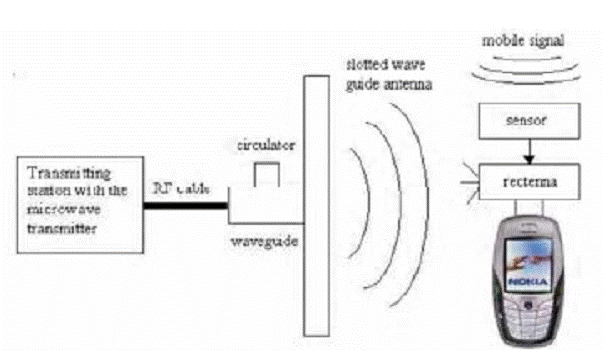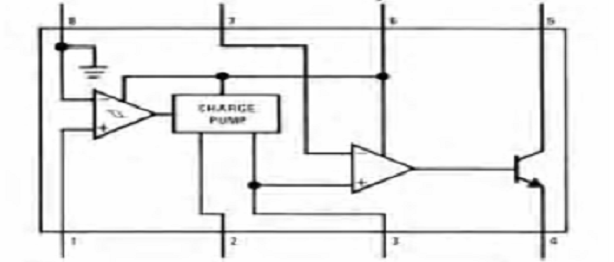





Published on Apr 02, 2024
With mobile phones becoming a basic part of life, the recharging of mobile phone batteries has always been a problem. The mobile phones vary in their talk time and battery standby according to their manufacture and batteries. All these phones irrespective of their manufacturer and batteries have to be put to recharge after the battery has drained out.
The main objective of this current proposal is to make the recharging of the mobile phones independent of their manufacturer and battery make. In this paper a new proposal has been made so as to make the recharging of the mobile phones is done automatically as you talk in your mobile phone! This is done by use of microwaves. The microwave signal is transmitted from the transmitter along with the message signal using special kind of antennas called slotted wave guide antenna at a frequency is 2.45 GHz.
There are minimal additions, which have to be made in the mobile handsets, which are the addition of a sensor, a Rectenna, and a filter. With the above setup, the need for separate chargers for mobile phones is eliminated and makes charging universal. Thus the more you talk, the more is your mobile phone charged! With this proposal the manufacturers would be able to remove the talk time and battery stand by from their phone specifications.
The basic addition to the mobile phone is going to be the rectenna. A rectenna is a rectifying antenna, a special type of antenna that is used to directly convert microwave energy into DC electricity.
Its elements are usually arranged in a mesh pattern, giving it a distinct appearance from most antennae. A simple rectenna can be constructed from a Schottky diode placed between antenna dipoles. The diode rectifies the current induced in the antenna by the microwaves.
Rectenna are highly efficient at converting microwave energy to electricity. In laboratory environments, efficiencies above 90% have been observed with regularity. Some experimentation has been done with inverse rectenna, converting electricity into microwave energy, but efficiencies are much lower--only in the area of 1%. With the advent of nanotechnology and MEMS the size of these devices can be brought down to molecular level.
It has been theorized that similar devices, scaled down to the proportions used in nanotechnology, could be used to convert light into electricity at much greater efficiencies than what is currently possible with solar cells. This type of device is called an optical rectenna.
Theoretically, high efficiencies can be maintained as the device shrinks, but experiments funded by the United States National Renewable energy Laboratory have so far only obtained roughly 1% efficiency while using infrared light. Another important part of our receiver circuitry is a simple sensor.
The basic addition to the mobile phone is going to be the rectenna. A rectenna is a rectifying antenna, a special type of antenna that is used to directly convert microwave energy into DC electricity.

Rectifies received microwaves into DC current a rectenna comprises of a mesh of dipoles and diodes for absorbing microwave energy from a transmitter and converting it into electric power. Its elements are usually arranged in a mesh pattern, giving it a distinct appearance from most antennae. A simple rectenna can be constructed from a Schottky diode placed between antenna dipoles as shown in Fig...
The diode rectifies the current induced in the antenna by the microwaves. Rectenna are highly efficient at converting microwave energy to electricity.
In laboratory environments, efficiencies above 90% have been observed with regularity. In future rectennass will be used to generate large-scale power from microwave beams delivered from orbiting SPS satellites.
The sensor circuitry is a simple circuit, which detects if the mobile phone receives any message signal. This is required, as the phone has to be charged as long as the user is talking. Thus a simple F to V converter would serve our purpose. In India the operating frequency of the mobile phone operators is generally 900MHz or 1800MHz for the GSM system for mobile communication.
A Schottky barrier diode is different from a common P/N silicon diode. The common diode is formed by connecting a P type semiconductor with an N type semiconductor, this is connecting between a semiconductor and another semiconductor; however, a Schottky barrier diode is formed by connecting a metal with a semiconductor.
When the metal contacts the semiconductor, there will be a layer of potential barrier (Schottky barrier) formed on the contact surface of them, which shows a characteristic of rectification. The material of the semiconductor usually is a semiconductor of n-type (occasionally p-type), and the material of metal generally is chosen from different metals such as molybdenum, chromium, platinum and tungsten. Sputtering technique connects the metal and the semi conductor.
A Schottky barrier diode is a majority carrier device, while a common diode is a minority carrier device.
When a common PN diode is turned from electric connecting to circuit breakage, theredundant minority carrier on the contact surface should be removed to result in time delay.
The Schottky barrier diode itself has no minority carrier, it can quickly turn from electric connecting to circuit breakage, its speed is much faster than a common P/N diode, so its reverse recovery time Trr is very short and shorter than 10 nS. And the forward voltage bias of the Schottky barrier diode is under 0.6V or so, lower than that (about 1.1V) of the common PN diode. So, The Schottky barrier diode is a comparatively ideal diode, such as for a 1 ampere limited current PN interface.
Below is the comparison of power consumption between a common diode and a Schottky barrier diode: P=0.6*1=0.6WP=1.1*1=1.1WIt appears that the standards of efficiency differ widely. Besides, the PIV of the Schottky barrier diode is generally far smaller than that of the PN diode; on the basis of the same unit, the PIV of the Schottky barrier diode is probably 50V while the PIV of the PN diode may be as high as 150V.
Another advantage of the Schottky barrier diode is a very low noise index that is very important for a communication receiver; its working scope may reach20GHz.
The sensor circuitry is a simple circuit, which detects if the mobile phone receives any message signal. This is required, as the phone has to be charged as long as the user is talking. Thus a simple F to V converter would serve our purpose. In India the operating frequency of the mobile phone operators is generally 900MHz or 1800MHz for the GSM system for mobile communication.
Thus the usage of simple F to V converters would act as switches to trigger the rectenna circuit to on. A simple yet powerful F to V converter is LM2907. Using LM2907 would greatly serve our purpose. It acts as a switch for triggering the rectenna circuitry. The general block diagram for the LM2907 is given below

Thus on the reception of the signal the sensor circuitry directs the rectenna circuit to ON and the mobile phone begins to charge using the microwave power.
• We can have a lot of options if the facility of wireless charging of mobile phones is somehow implemented.
• If we are running out of battery, then what we need to do is just call a number from our phone will be recharged by packet energy within some time without the need to search for plugging in our phone.
• What we need to do is turn on our laptop or search for any other laptop or phone users near by and charge our phone by Bluetooth.
Thus this paper successfully demonstrates a novel method of using the power of the microwave to charge the mobile phones without the use of wired chargers. Thus this method provides great advantage to the mobile phone users to carry their phones anywhere even if the place is devoid of facilities for charging. A novel use of the rectenna and a sensor in a mobile phone could provide a new dimension in the revelation of mobile phone.
| Are you interested in this topic.Then mail to us immediately to get the full report.
email :- contactv2@gmail.com |